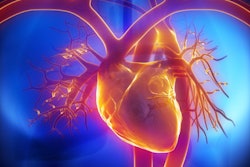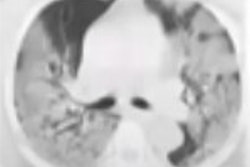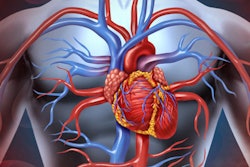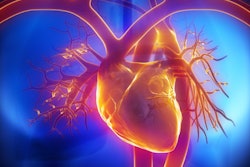
Hospitalized COVID-19 patients who had impaired first-phase ejection fraction on echocardiography were nearly five times more likely to die, compared with patients with healthier measures of this early sign of heart failure, according to new research published May 10 in Hypertension.
Researchers from London, England, and Wuhan, China, found that first-phase ejection fraction on echocardiography scans was strongly associated with survival in COVID-19 in two independent cohorts from China and the U.K. The measurement probably reflects a connection between COVID-19 severity and preexisting preclinical heart failure.
"First-phase ejection fraction is strongly predictive of survival from COVID-19 and implicates early left ventricular dysfunction, probably arising as a chronic condition before infection, as a determinant of survival," the authors wrote. "It may be useful in stratifying preventive or therapeutic treatments and as a therapeutic target."
Cardiovascular risk factors and disease have been recognized as COVID-19 risk factors that have a high negative impact on patient outcomes. The researchers hypothesized that predisposition to heart failure would be associated with more severe cases of COVID-19 in hospitalized patients.
Previous studies of hospitalized patients who have undergone echocardiography to investigate suspected heart complications of COVID-19 have demonstrated little or no association between overall left ventricular ejection fraction and survival. However, the researchers hypothesized that a different measure of heart function -- first-phase ejection fraction, or EF1 -- might be a better indicator because systolic function is more sensitive to being compromised by acute or chronic injury.
To investigate their hypothesis, researchers analyzed mortality rates for 129 hospitalized COVID-19 patients in Wuhan, China, and 251 patients in South London, treated between February and May 2020. All patients had echocardiography on hospital admission, and the average patient age was 58.
The authors compared the echocardiography results of COVID-19 patients with those of adult patients with otherwise similar health profiles who had an echocardiography test before the pandemic. First-phase ejection fraction was measured with conventional echocardiography imaging conducted at the bedside of hospitalized patients.
Based on previous research, the researchers estimated that the normal first-phase ejection fraction value should be above 25%. When this was less than 25%, they referred to it as "impaired," suggesting relatively subtle signs of heart damage.
The team found that COVID-19 patients with a first-phase ejection fraction of less than 25% had a nearly five-fold higher risk of death than those with an ejection fraction of 25% or higher. They also found that a similar proportion of people with similar risk factors who did not have COVID-19 had low values of first-phase ejection fraction.
The authors suggested that the damage to the heart may be due to chronic preexisting conditions and not the result of COVID-19 infection.
"The much stronger association of first-phase ejection fraction than of individual risk factors or comorbidities with morbidity from COVID-19, if confirmed in larger series, may be useful in identifying patients who are at high risk of COVID-19, particularly in patients who have undergone cardiac imaging," they said.




















